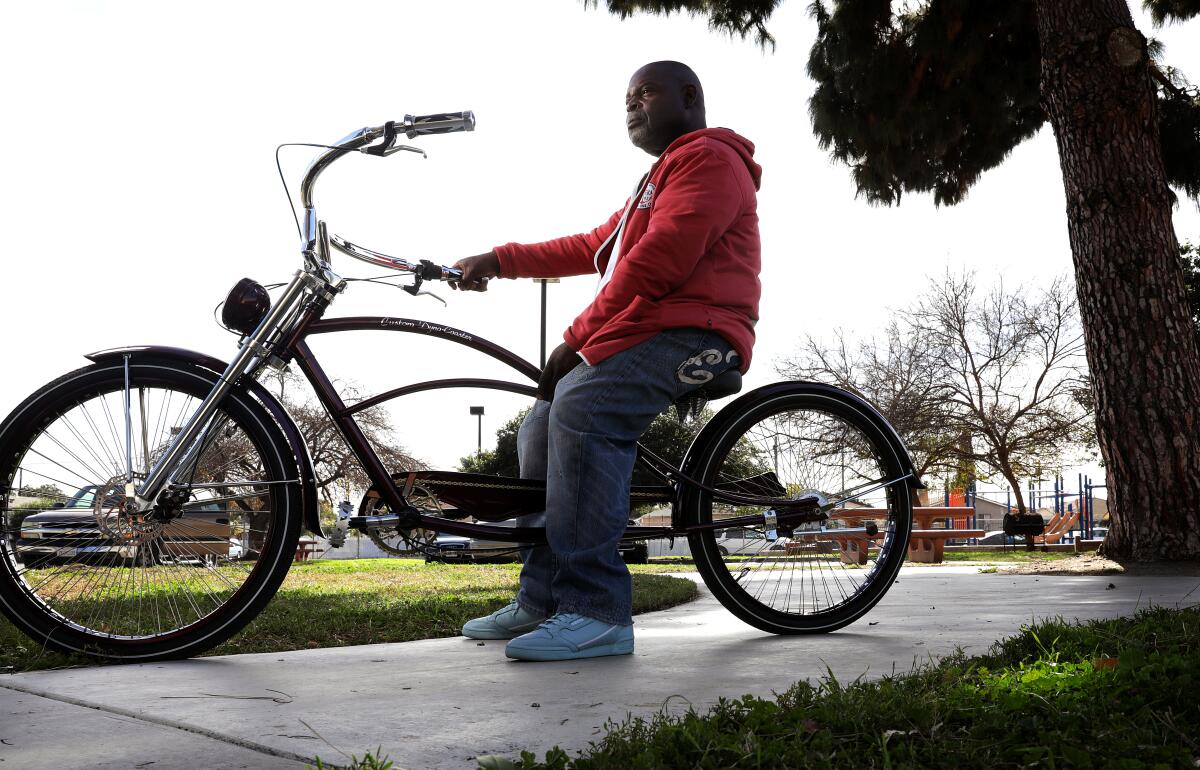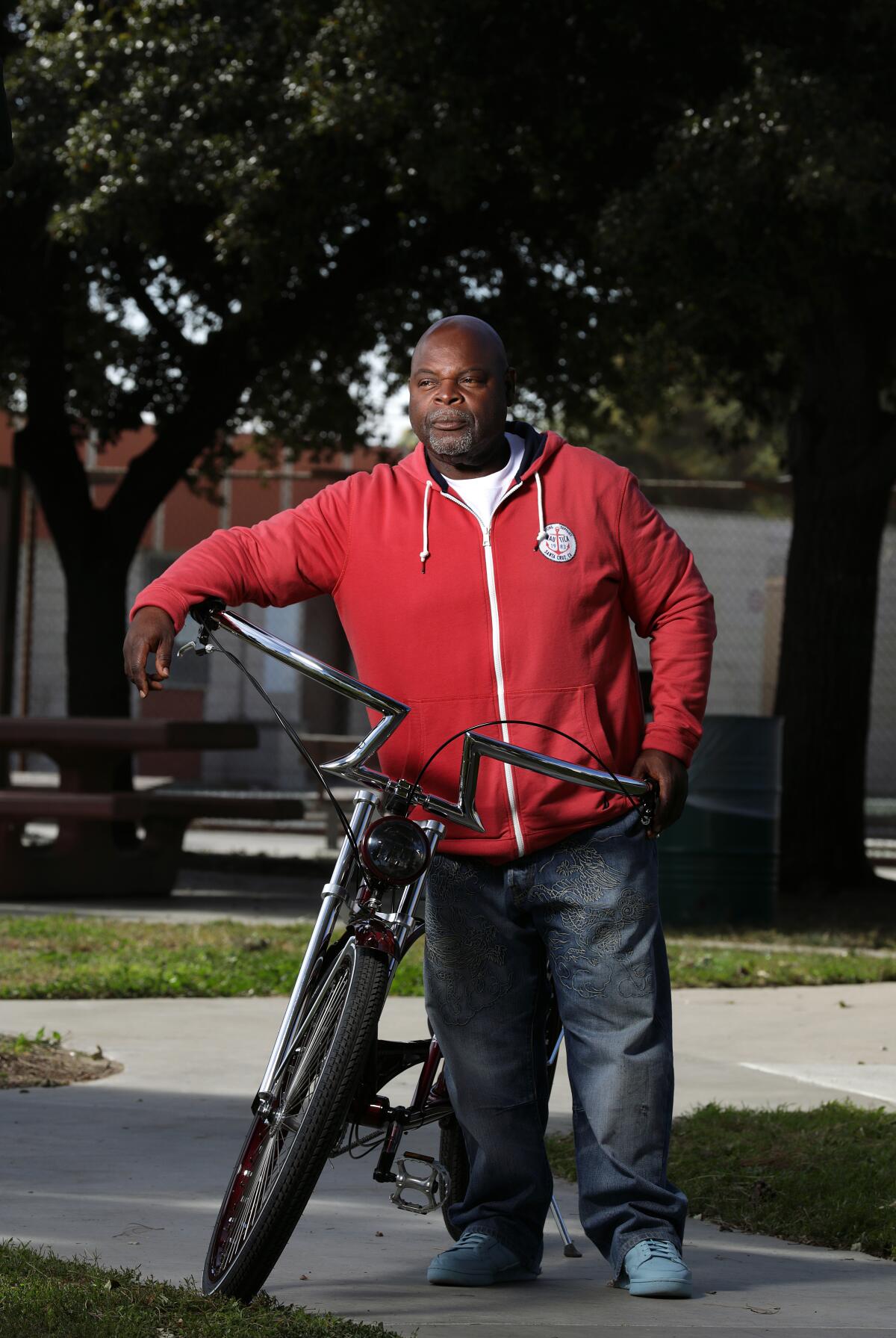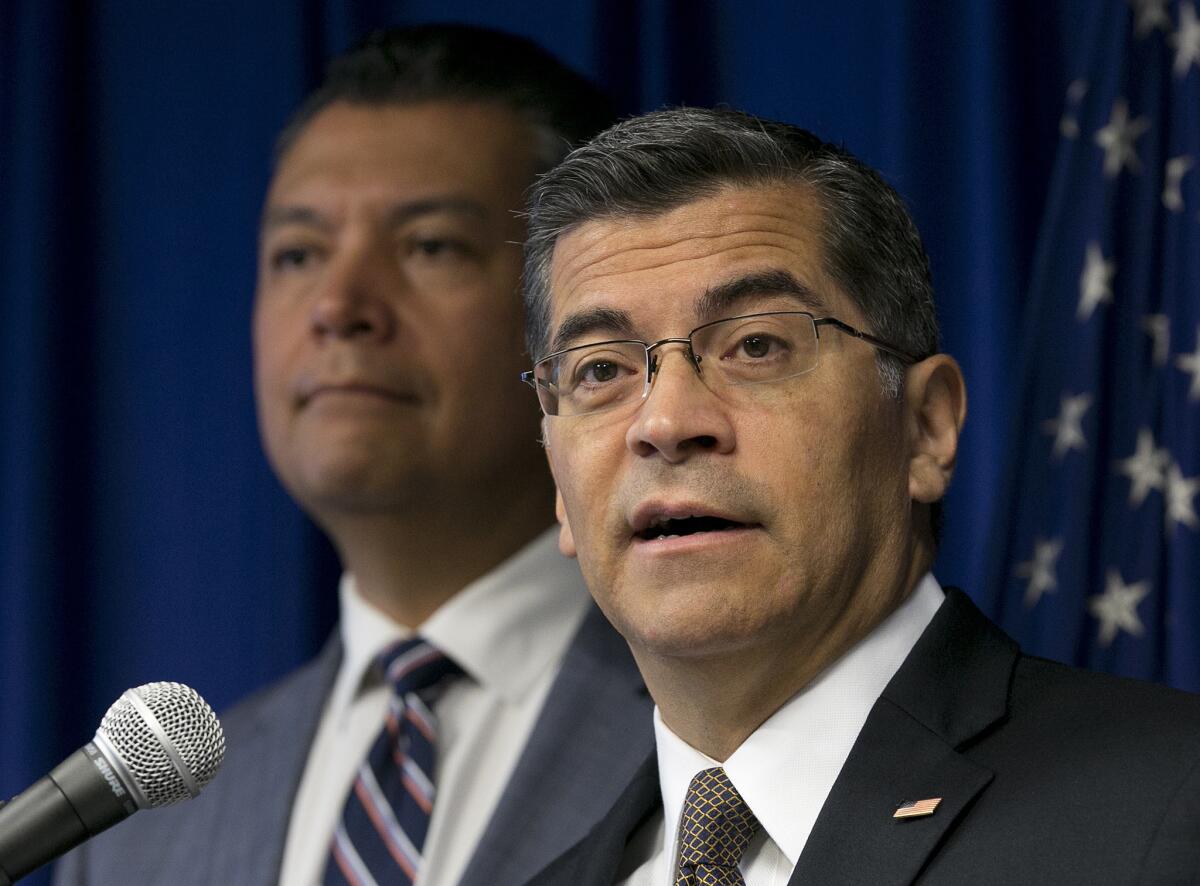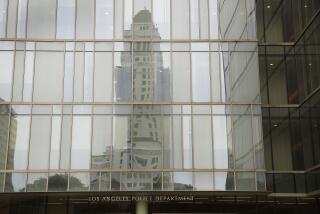The LAPD branded them as gang associates. But they fought back and got removed from CalGang database

Larry Sanders was chatting with friends in South L.A.’s Green Meadows Recreation Center in April when two police officers approached. They said they had received a call about people drinking in the park.
The officers asked them to lift up their shirts, Sanders recalled. The 59-year-old singer, known for his vocals on Coolio’s hit “Gangsta’s Paradise,” showed them a tattoo of a cross on his left arm.
About two weeks later, Sanders received a letter that said he would be added to CalGang, the statewide gang database. He was shocked. He had worked in the park for years as a gang interventionist for the city’s Summer Night Lights program.
“I wasn’t what they were claiming me to be,” said Sanders. “I can’t just accept it.”
In fact, everyone who has challenged the LAPD’s decision to place them or their child in the gang database in court has had their name removed, according to a Times review of records and interviews.
Sanders was among 15 people who appealed their LAPD CalGang designation. The city lost two cases in court, and the LAPD agreed to remove 13 others who subsequently filed petitions, the analysis found.
Petitioners like Sanders say their removals show that they never should have been on the list and that the evidence against them was flimsy.
Los Angeles Police Department officials, however, say the removals were due to how the court interpreted a state law that prohibits them from submitting more evidence to the court than they originally disclosed to petitioners. The department insists the removals don’t suggest it is putting people in the database who don’t deserve to be there.

The petitions offer a window into how the LAPD adds and removes people to the secretive database. The agency’s use of CalGang erupted into scandal in January after it announced it was investigating allegations that officers intentionally falsified information used to identify gang members or their associates.
The LAPD has since taken steps to add oversight to its use of the database and the California attorney general’s office on Monday announced that it would be investigating the department’s handling of CalGang.
In 2017, a state law established a process for people seeking removal from the list. Individuals first appeal to the law enforcement agency that put them on the list. If the request is denied or they don’t receive a response, they can petition the court.
The city attorney’s office, which represented the LAPD in the 2019 petitions, wrote in a statement that it lost the first two petitions when the court ruled that the LAPD’s evidence, which consisted primarily of a letter listing the general reasons but not the underlying facts supporting inclusion in the database, was not clear and convincing proof.
The petitions filed since then involved similar circumstances, so “the city determined not to pursue those cases,” it said.
In the face of the losses in court, LAPD Assist. Chief Horace Frank said the department in December began requiring its CalGang notification letter to provide more details about the reasons for inclusion. Individuals will now be given a spreadsheet that in addition to indicating the general criteria a person met, gives the name of the officer involved. It also includes a space for additional details.
“We decided, ‘OK, we’ll make sure we send the person all the information as to why we’re putting you in the system,’” he said. “Unfortunately we weren’t doing that initially. We were basically just checking the boxes.”
The LAPD places more people on CalGang than any other law enforcement agency in the state. According to 2018 data by the attorney general’s office, the department was responsible for 20,583 individuals — more than 20% of the names in the database.
The public has no access to CalGang. For decades, police officers have used the database to check on suspected gang ties and affiliations.
Work to reform the process is underway. A 2016 state audit found some of the agencies entering alleged gang members’ names, including the LAPD, could not substantiate the claims for some entries. Currently, law enforcement can use information like clothing or identification as gang members by “reliable” sources. Only two or three of eight possible criteria need to be documented, depending on the circumstances.

California Atty. Gen. Xavier Becerra said Monday that an erroneous placement could lead to unwarranted scrutiny by law enforcement. Larry Droeger, head deputy of the hardcore gang division at the Los Angeles County district attorney’s office, said a detective who has access to CalGang can be asked to go into the database and identify the officers who made contact with an individual. If those officers testify in court, that can be used as one piece of evidence to show that a crime was committed to benefit a gang.
But he added, “Officers testifying as to a person being a member of a gang is not going to make or break a gang allegation.”
Requesting to be removed from the database is rare. According to the attorney general’s report, only 53 requests for removal were made between Nov. 1, 2017 and Oct. 31, 2018. The San Bernardino County Sheriff’s Department and the LAPD received the most requests. While San Bernardino County granted three of 18 requests, the LAPD denied all 15 it received.
LAPD spokesman Josh Rubenstein said the department plans to review those denials. The attorney general’s 2019 report on CalGang, which will include the requests for removal made in the subsequent reporting period, will be published this week.
“There are very few stories of people getting off the CalGang database,” said Jorja Leap, a gang expert at UCLA’s Luskin School of Public Affairs. “All of this creates a stew of distrust and people not trying and people not succeeding.”
But Wes McBride, a former gang deputy with the Los Angeles County Sheriff’s Department who created the precursor to CalGang in the 1980s, said most of the people on the list should be there.
“The vast majority of these guys know they’re gang members,” he said. “Generally speaking, they know who they are and they know why they are” there.
Sanders’ letter said he had met three criteria to justify his inclusion on the database — arrest for offenses consistent with gang activity, association with documented gang members and frequenting gang areas. With nothing more to go on, Sanders could issue only a blanket denial, said Sean Garcia-Leys, an attorney at the Urban Peace Institute who represented Sanders. The singer had been arrested in his 20s for reasons that he said were unrelated to gang crime. He did not know the identities of the alleged gang members.
“It said he was in a gang area — does that mean they think all of South-Central is a gang area? That that park is a gang area? [Sanders] couldn’t adequately respond to that,” said Garcia-Leys.
Garcia-Leys wrote a letter to the LAPD saying it had not provided clear and convincing evidence of Sanders’ gang membership, association or affiliation — the standard the agency would need to meet in court. The LAPD didn’t respond to the request, he said, so he filed a court petition. He then entered into an agreement with the city attorney’s office.
In October — five months after the encounter at the park — Sanders learned that he was no longer on CalGang.
In a statement, Assist. Chief Frank wrote that his removal did not mean that he was wrongfully placed in the database. “We are neither asserting nor conceding that removing him from the database means that he should not have been placed there to begin with,” he said.
Sanders sees things differently. “They had no evidence, no nothing to say that I’m a gang banger. I can hang with a million people but that don’t make me one of them.”
In a June 25 letter to the California attorney general’s office, a group of attorneys who have represented clients petitioning for removal asked for greater transparency from law enforcement. Police departments, they wrote, should provide the name of the gang with which their clients were allegedly involved.
“They need to provide the actual evidence, including the video evidence if it’s based on that interaction, photographic evidence if it’s based on a social media post,” said Melanie Ochoa, an attorney at the ACLU of Southern California.
The current LAPD scandal began last year when a Van Nuys mother complained that her teenage son was erroneously added to CalGang after a field interview with officers. Police supervisors reviewed body camera footage from the officers and found it did not match their accounts, leading to an expanded internal investigation and a recent recommendation by Chief Michel Moore to fire of one of the officers involved.
The controversy is already leading to changes. Assist. Chief Frank said the department has begun training officers to be more specific when identifying on a field interview card the evidence to justify someone’s addition to the database, including why a particular area is a gang location.
“They have to specifically articulate where that person was found in the park that is considered a gang location. ‘In this particular area of the park, this is where gang X, Y, Z hangs out and they have claimed this part of the park by the graffiti,’” Frank said.
The department is increasing oversight of how it adds people to CalGang and how it reviews requests for removal. A deputy chief will review requests for removal if lower-ranking officials deny it. Before adding someone to the list, a gang supervisor will go over any arrests or citations the individual received and ensure that the information on the field interview card is consistent with the officer’s body-worn camera video. Then, a gang impact team lieutenant will conduct another review.
Tina Padilla, a program manager at Breaking Through Barriers to Success, which serves at-risk youth in Los Angeles, said she’s received about 10 inquiries since January from families who worry that they or their child could be in the database because they live in neighborhoods with gang activity. While the LAPD mails individuals a notice that they’ll be entered into the database, families are concerned that they might have missed a letter.
Parents who want to find out if they or their child are in the database often worry about being stigmatized for being seen going to a station, she said. They also fear the repercussions of bringing themselves to the attention of the police department.
“They don’t want to go in and ask LAPD if they’re on it,” she said. “If they do ask LAPD and they’re not on it, they’ll feel like they’ll get put on it because they asked.”
Even if an individual feels they should not be on the database, they are often too discouraged to fight the department.
“It’s lack of trust, because in their mind, LAPD put them on this list, why would they take me off?” she said.
More to Read
Sign up for Essential California
The most important California stories and recommendations in your inbox every morning.
You may occasionally receive promotional content from the Los Angeles Times.











